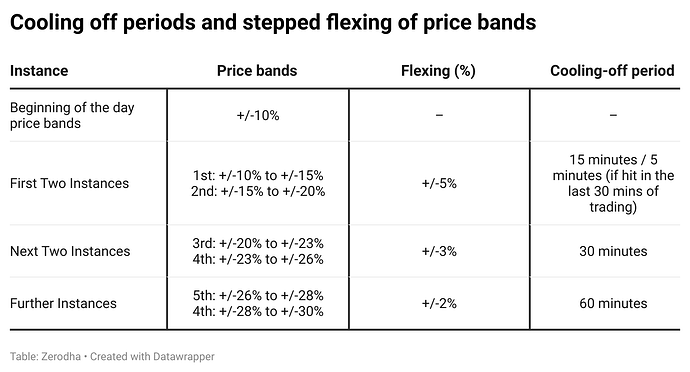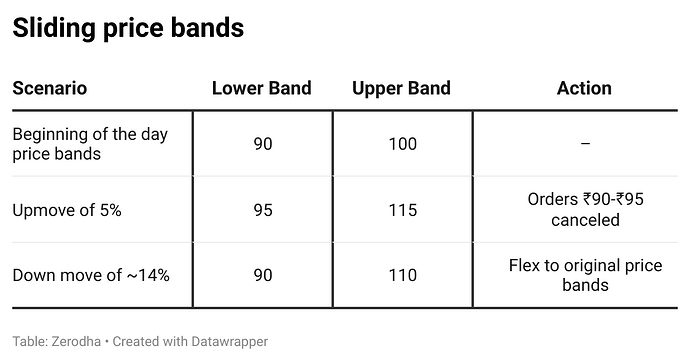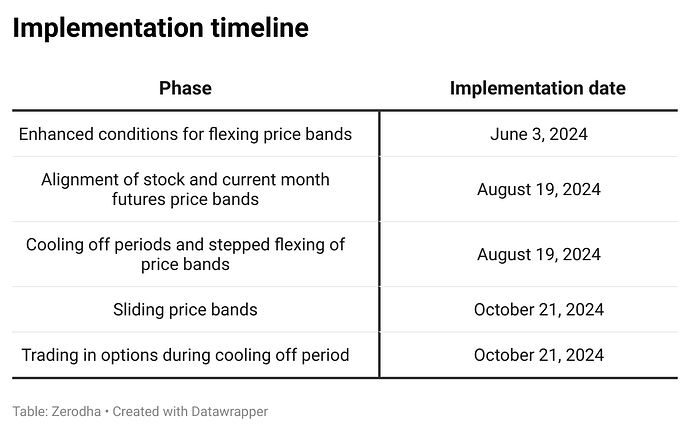SEBI recently introduced key changes to the dynamic price bands for stocks in the F&O segments. These changes aim to enhance volatility management during significant stock price movements and reduce information asymmetry.
What are price bands? Here’s all you need to know!
-
All stocks and derivative contracts traded on the exchanges have defined price bands within which they can trade for the day. These bands typically range from +/-2% to +/-20% of the previous close price.
-
Stocks in the F&O segment don’t have any daily limits on price bands, meaning prices can theoretically move without restriction.
-
Initially, the price bands are set at +/-10% from the previous close for stocks in the F&O segment and futures contracts. For options, the price band is correlated to the theoretical pricing of the option when the underlying equity is at +/-10%.
-
If this band is hit, it can be incrementally revised by +/-5% throughout the day. The 10% limit is primarily in place to prevent abnormal trades.
Here are the optimizations introduced to the existing framework:
-
Earlier for the price bands to be flexed after hitting circuit limits, there had to be a minimum of 25 trades from 5 different accounts executed at or above +/-9.90%(or +/-14.90% or +/-19.90% and so on).
-
From 3rd June onwards, this has been enhanced to 50 trades across 10 trading accounts and 3 trading members to ensure flexing is done only on genuine market movements and not fat finger errors.
-
Currently, the price bands of futures contracts are flexed only if the price bands of underlying equity stock are flexed. Under the new framework, the price bands will be flexed if either current month futures or underlying hits their price bands.
-
Currently, the first price band is set at 10%, beyond which there is a 5% flexing after a 15-minute cooling period once the price band is hit. This has been revised to the following:
- SEBI has also introduced sliding of price bands. If the price bands are flexed in one direction, the band on the other side is concurrently flexed by an equivalent amount, which was not the case earlier.
-
Currently, options continue to trade at their existing price bands until the stock’s cooling off is lifted and the new price band is applicable.
-
The circular has created a provision for a temporary floor or ceiling price that can be created based on the LTP (if liquid) or theoretical price (if illiquid) in the sentimental direction of the contract to allow traders to hedge/de-risk their positions in times of market volatility.
These changes will be implemented in a phased manner as shown below:
You can check out our Z-connect post for more information:


